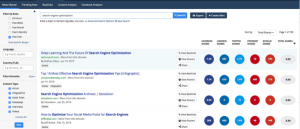 Animation on your website can change it from a still, dull-looking page into something really dynamic and exciting. In our post this week, we take a look at the things you need to bear in mind when planning an animation project.
Animation on your website can change it from a still, dull-looking page into something really dynamic and exciting. In our post this week, we take a look at the things you need to bear in mind when planning an animation project.
Clear purpose
Before you can begin planning your site’s animation, it’s essential to have a very clear idea of why you’re doing it. Are you trying to sell more of a particular product or service? Looking to create something that will attract attention to your brand through social media? Trying to provide additional value to your existing customer base? Once you know what you’re trying to do, you need to ask yourself the difficult question: Is an animation the best way to do this?
Top tip: Start by writing down your overall goal. Keep looking back at this through the design process to ensure that you’re still on-track.
Audience
Similarly, you need to think about your target audience. Are these your usual website visitors or are you now trying to bring in a new type of client? Consider demographics, psychographics and geographics. The best animation in the world won’t have the desired impact if it’s aimed at the wrong people.
Top tip: Create brief profiles of your target audience/s (this won’t be wasted time because all this information will feed into the creative choices you will later make).
Style
Once you’ve identified the ‘why’ and the ‘who’, it’s time to get your creative hats on. The animation style you choose will need to complement your brand and your message and must appeal effectively and directly to your audience, so it’s vital to choose carefully. Four main types of animation to consider are:
- Flipbook animation
- Stop motion animation
- 2D animation
- 3D animation
Perhaps you’re looking for something that’s clear and informational. Or maybe something that demonstrates a process or product. But whether you’re trying to exude a sense of realism, take your viewers on an educational experience or generate a few laughs, you will be need to select an animation style that meets your ‘purpose’, ‘audience’, ‘brand’ and ‘message’ criteria.
Top tip: Before you start, take a look at as many examples of animation as possible, not just on your competitors’ websites, but from across a wide range of industries and disciplines. Take note of what works and what doesn’t.
Storyboarding
From the written word to billboard advertising, radio and TV, storytelling is the driver of communication, and is an entirely central part of animation.
Developed at Walt Disney Productions in the 1930s, storyboarding has become a very effective and time-tested method of animation production and allows you to generate a clear narrative, as well as play with repositioning of elements to include flashbacks, flash-forwards and so on. You can do the process with computer-based software or use something as straightforward as pens and paper or Post-It notes.
Top tip: Include the whole team at the storyboarding stage. It’s a great chance for innovation and creative thinking, it’s fun and it gets you working in a truly collaborative way.
Characters
No story is complete without its characters. There to generate that all-important emotional connection – from empathy and understanding to recognition and even anger – your characters will often be the most memorable and resonating part of your animation and you need to take plenty of time getting them just right. Do your market research and listen to what people are telling you (it’s easy to get pulled in by your characters and not spot when things aren’t working).
Top tip: Just be careful that you don’t spend so long working on your characters that you lose sight of what your animation is for. You don’t want customers remembering your adorable penguin character but forgetting what your brand name is!
Length
As a rule, shorter is better when it comes to animation. Audiences typically don’t have too much time on their hands and don’t want to sit down and watch a feature film on your website. So stick to the point and don’t over-script.
Top tip: Show, rather than tell. And remember that juxtaposing the words in your audio against what is being seen on screen can communicate an awful lot in the same amount of time.
Choose your animation team
Unless you’re a specialist animator yourself, you’ll likely be looking around for someone to create your animation for you. Your animation team will need to:
- Have a very clear sense of what you’re trying to achieve
- Understand who your audience are
- Understand what your brand is, what your company does and what your key message is
- Be great communicators
- Be highly skilled in the type of animation you want
- Be able to deliver on time and on budget
- Be able to add that extra bit of sparkle to your project
Top tip: Always, always ask for samples of animation work before you enter into any agreements, and make sure you know exactly what you’re getting in terms of deliverables, milestones and price.
With the right planning and the right team in place, your website animation project should be a great success. All that then remains is to measure your analytics to see how effective it is in a quantitative sense and sit back ready to receive that animation award!
Digital & Social Articles on Business 2 Community(47)
Report Post






